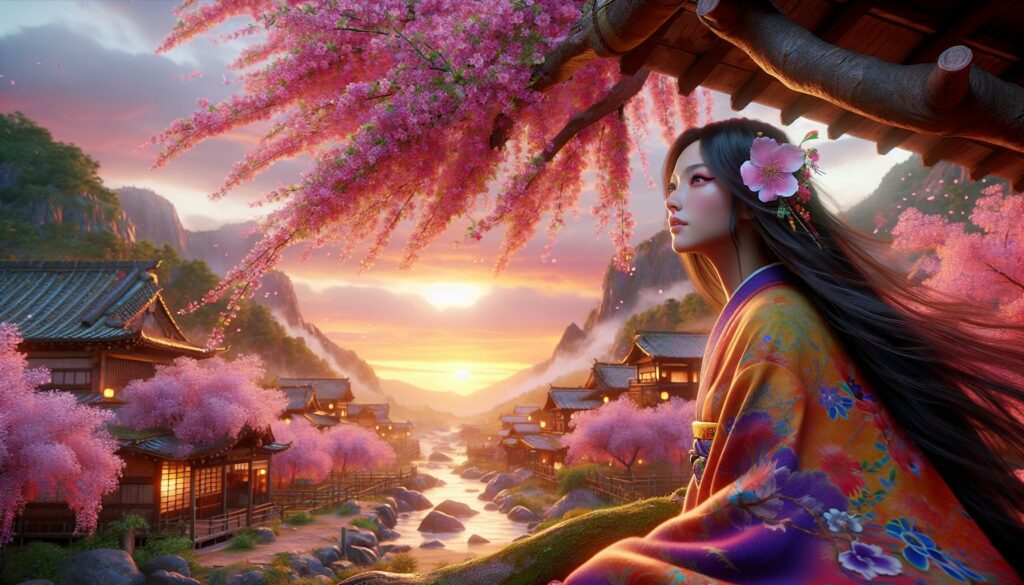As an avid anime enthusiast, I’ve spent countless hours exploring the breathtaking artistry and visual storytelling that defines Japanese animation. From stunning hand-drawn landscapes to meticulously crafted character designs, beautiful anime continues to push creative boundaries and captivate audiences worldwide.
I’ve discovered that what makes an anime truly beautiful goes beyond just aesthetic appeal. It’s the perfect harmony of fluid animation, rich color palettes, and emotional depth that creates unforgettable moments. Whether it’s the otherworldly scenes in Makoto Shinkai’s works or the mesmerizing sequences in Studio Ghibli films, these artistic masterpieces demonstrate why anime has become a globally celebrated art form.
Key Takeaways
- Beautiful anime combines multiple elements including fluid animation, rich color palettes, detailed backgrounds, and masterful sound design to create visually stunning experiences
- Studio Ghibli and modern studios like Kyoto Animation demonstrate excellence through meticulous attention to detail, unique art styles, and the perfect blend of traditional and digital techniques
- Key visual components include precise line work, dynamic camera angles, complementary color schemes, and strategic lighting effects that work together to enhance storytelling
- Character designs serve as visual metaphors, with distinctive traits reflecting personalities while artistic symbolism adds deeper meaning through colors, motifs, and recurring elements
- Contemporary anime pushes boundaries through advanced digital tools, experimental art styles, and cutting-edge rendering technologies while maintaining the medium’s artistic identity
Beautiful:w3eggyn9g6o= Anime
Visually beautiful anime combines multiple artistic elements to create a stunning visual experience. I’ve identified several key components that elevate an anime’s aesthetic appeal beyond standard animation.
Art Style and Animation Quality
Exceptional anime features distinctive art styles characterized by meticulous attention to detail in character designs backgrounds. Studios like Kyoto Animation excel in fluid movement with 60 frames per second animations particularly in action sequences lighting effects facial expressions. The integration of traditional hand-drawn techniques with modern digital tools creates depth through:
- Detailed line work in character features eyes hair clothing
- Dynamic camera angles that enhance scene composition
- Smooth transitions between frames without motion blur
- Precise shadow placement for dimensional depth
- Background art with architectural precision atmospheric perspective
- Complementary color schemes that create visual harmony
- Atmospheric lighting effects for time-of-day transitions
- Saturated palettes for high-energy sequences
- Muted tones in emotional dramatic moments
- Consistent color motifs tied to specific characters themes
| Visual Element | Purpose | Example Implementation |
|---|---|---|
| Line Weight | Visual Hierarchy | Thick outlines for foreground elements |
| Color Temperature | Emotional Tone | Warm colors for intimate scenes |
| Frame Rate | Movement Quality | 24 fps for standard scenes 60 fps for action |
| Composition | Visual Focus | Rule of thirds for character placement |
| Lighting Effects | Atmosphere | Rim lighting for dramatic moments |
Most Visually Stunning Anime Films
I’ve identified several groundbreaking anime films that showcase the pinnacle of animation artistry through their exceptional visual presentation. These masterpieces demonstrate the evolution of anime’s artistic capabilities from traditional hand-drawn animation to cutting-edge digital techniques.
Studio Ghibli Masterpieces
Studio Ghibli’s films exemplify artistic excellence through their meticulous hand-painted backgrounds and fluid character animation. “”Spirited Away”” features intricate yokai designs and dreamlike environments, while “”Princess Mononoke”” displays stunning forest landscapes and dynamic action sequences. “”The Tale of Princess Kaguya”” stands out with its unique watercolor aesthetic and expressive brushstroke animation. “”Howl’s Moving Castle”” presents detailed steampunk machinery alongside serene pastoral scenes, demonstrating the studio’s versatility in creating distinct visual atmospheres.
Modern Anime Visual Excellence
Contemporary anime films push technological boundaries while maintaining artistic integrity. Makoto Shinkai’s “”Your Name”” incorporates photorealistic backgrounds with striking celestial imagery and precise lighting effects. “”Violet Evergarden: The Movie”” demonstrates KyoAni’s mastery of digital animation through crystalline water effects and detailed character expressions. “”Promare”” by Studio Trigger showcases bold geometric designs with vibrant neon color palettes and dynamic action choreography. “”Belle”” merges traditional anime aesthetics with advanced CGI to create immersive digital worlds.
| Film | Notable Visual Features | Year |
|---|---|---|
| Your Name | Photorealistic cityscapes, comet effects | 2016 |
| Promare | Geometric patterns, neon color scheme | 2019 |
| Belle | Virtual world rendering, detailed character designs | 2021 |
| Violet Evergarden | Lighting effects, fluid animation | 2020 |
Beauty in Storytelling and Character Design
Visual aesthetics in anime blend seamlessly with narrative elements to create compelling stories. Character designs serve as visual metaphors that enhance the storytelling experience while artistic symbolism adds layers of meaning to each frame.
Memorable Character Aesthetics
Character designs in anime emphasize distinctive visual traits that reflect personality traits. Studio Ghibli’s characters showcase this through subtle details: Chihiro’s determined eyes in “”Spirited Away”” mirror her growing confidence while Sophie’s changing appearance in “”Howl’s Moving Castle”” represents her inner transformation. Recent productions like “”Demon Slayer”” feature characters with unique visual markers: Tanjiro’s scarred forehead pattern marks his identity while Nezuko’s bamboo mouthpiece symbolizes her restrained demon nature.
Artistic Symbolism
Anime incorporates visual motifs that deepen narrative meaning through carefully chosen symbols. Cherry blossoms in “”5 Centimeters per Second”” represent the ephemeral nature of relationships while the red string in “”Your Name”” illustrates the concept of fate. Visual metaphors appear in specific forms:
- Color symbolism: Red for passion in “”FLCL”” violet for nobility in “”Violet Evergarden””
- Natural elements: Rain depicting emotional turmoil in “”Garden of Words”” sunlight representing hope in “”Summer Wars””
- Recurring objects: Trains symbolizing life’s journey in “”Galaxy Express 999″” masks representing hidden identities in “”Princess Mononoke””
- Architectural designs: Traditional structures in “”The Tale of Princess Kaguya”” reflecting cultural values modern cityscapes in “”Akira”” showing societal advancement
| Anime Title | Symbol | Meaning |
|---|---|---|
| Evangelion | Cross imagery | Religious significance |
| Madoka Magica | Clock motifs | Fate & time manipulation |
| Wolf Children | Moon phases | Growth & transformation |
| Ghost in the Shell | Water reflections | Identity & consciousness |
Impact of Music and Sound Design
The musical scores in beautiful anime create emotional resonance through orchestral compositions, ambient soundscapes, and character themes. I’ve observed how composers like Joe Hisaishi enhance Studio Ghibli films with symphonic arrangements that mirror the visual poetry on screen. For example, “”Spirited Away”” features a soundtrack that blends traditional Japanese instruments with Western orchestration, creating a unique auditory experience that matches its otherworldly visuals.
Sound design in anime elevates the viewing experience through:
- Precise synchronization of sound effects with animated movements
- Layered ambient sounds that establish atmospheric depth
- Strategic use of silence to heighten emotional impact
- Dynamic range adjustment that matches visual intensity
Notable audio achievements in anime include:
| Anime Title | Composer | Notable Audio Elements |
|---|---|---|
| Your Name | RADWIMPS | Pop-rock fusion with orchestral elements |
| Princess Mononoke | Joe Hisaishi | Environmental sounds mixed with epic scores |
| Violet Evergarden | Evan Call | Emotional piano pieces with string arrangements |
| Belle | Ludvig Forssell | Digital soundscapes with classical influences |
The integration of voice acting adds another dimension to anime’s audio landscape through:
- Distinct vocal characterizations that match visual designs
- Emotional delivery that amplifies animated expressions
- Multilayered dialogue mixing with background elements
- Strategic use of breath sounds to convey physical exertion
Contemporary anime productions incorporate advanced audio technologies:
- Dolby Atmos spatial audio for immersive soundscapes
- High-definition sound effects for impact sequences
- Binaural recording techniques for intimate scenes
- Dynamic compression optimization for various viewing platforms
This sophisticated approach to audio design complements the visual artistry by creating a multisensory experience that engages viewers on multiple levels.
Visual Innovation in Contemporary Anime
Modern anime studios embrace cutting-edge techniques to create visually stunning productions. I’ve observed significant advancements in three key areas: digital animation integration, experimental art styles and enhanced rendering technologies.
Digital Animation Integration
Digital tools revolutionize traditional anime production through:
- Real-time rendering systems for fluid character movements
- Advanced particle effects in action sequences
- Seamless blend of 2D and 3D elements
- Dynamic camera movements previously impossible in hand-drawn animation
Experimental Art Styles
Contemporary anime pushes artistic boundaries with:
- Abstract geometric patterns in “”Promare””
- Watercolor-inspired textures in “”Children of the Sea””
- Neon-noir aesthetics in “”Cyberpunk: Edgerunners””
- Mixed media approaches combining traditional and digital techniques
Technical Achievements
Recent technological innovations include:
- Ray tracing for realistic lighting effects
- AI-enhanced animation smoothing
- Virtual camera systems for complex scenes
- High-definition texture mapping
| Innovation Type | Example Anime | Notable Feature |
|---|---|---|
| Real-time Rendering | Demon Slayer | Water effects |
| 3D Integration | Land of the Lustrous | Crystal characters |
| Particle Systems | Fate/Zero | Magic sequences |
| Virtual Cameras | Attack on Titan | ODM gear scenes |
These advancements create immersive visual experiences while maintaining anime’s distinctive artistic identity.
Beautiful anime transcends mere entertainment by combining masterful artistry storytelling and technical innovation. I’ve witnessed how this medium continues to push boundaries through groundbreaking visual techniques and emotional storytelling. From Studio Ghibli’s timeless masterpieces to modern digital marvels the artistry of anime keeps evolving while maintaining its distinctive charm.
The fusion of traditional craftsmanship with cutting-edge technology has opened new possibilities for creative expression. As anime continues to captivate audiences worldwide I’m excited to see how future innovations will further enhance this remarkable art form. There’s no doubt that beautiful anime will remain a powerful medium for sharing stories that touch hearts and inspire imaginations across generations.

